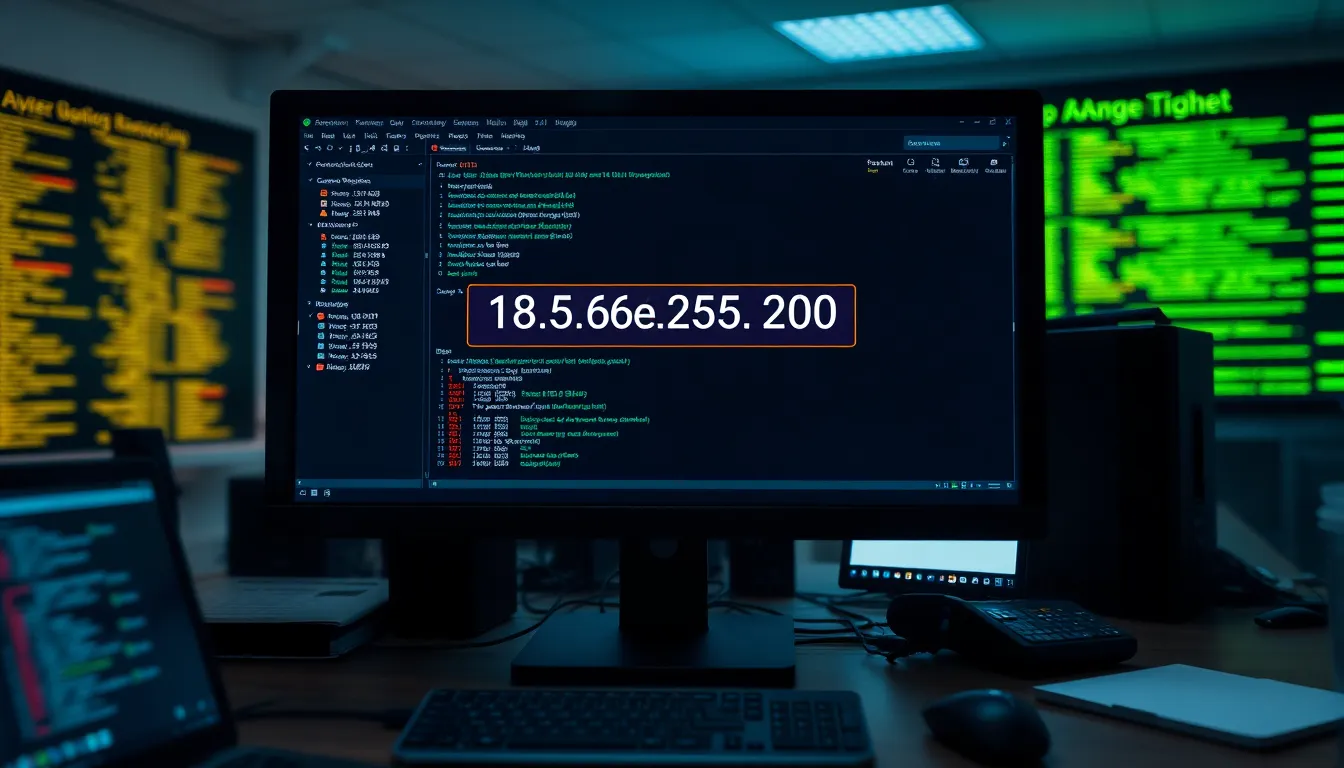In the vast universe of IP addresses, 185.6e.253.200 stands out like a quirky character in a crowded room. It’s not just a series of numbers; it’s a gateway to understanding the digital world around us. Ever wondered what makes this particular address tick? Spoiler alert: it’s more fascinating than your last Netflix binge!
Table of Contents
ToggleOverview of 185.6e.253.200
185.6e.253.200 represents an unconventional IP address format. The inclusion of the letter “e” indicates a possible error or variation from standard notation. Typically, IP addresses feature four octets, each ranging from 0 to 255.
This address’s structure begs examination. Valid IP addresses maintain a clear numerical format, with no letters present. Network administrators prioritize understanding the nature of this address. Investigating unusual entries like 185.6e.253.200 can unveil potential security risks or misconfigurations.
Analysts often explore the origins of IP addresses. Typically, an IP address traces back to either an Internet Service Provider (ISP) or an organization. The unusual format of 185.6e.253.200 raises questions about its legitimacy. Network security assessments frequently include scrutiny of erratic IP addresses.
Exploring the motivations behind this address format enhances understanding. Cyber threats sometimes employ non-standard addresses to obscure their activities. Heuristic evaluations often flag such addresses as suspicious.
Tools for IP analysis provide insights into the behavior associated with addresses like 185.6e.253.200. Networking specialists often utilize databases and tools to track origin and usage patterns. Recognizing these patterns aids in fortifying network security measures.
185.6e.253.200 serves as a notable example in digital communications. Prioritizing thorough exploration of its format ensures network integrity and awareness across users.
Significance in Networking
Understanding the significance of the IP address 185.6e.253.200 involves evaluating its unusual format. The presence of the letter “e” deviates from standard IP address notation, often consisting solely of four numerical octets. This anomaly raises red flags for network administrators and cybersecurity professionals. Experts categorize non-standard addresses as potential security threats, prompting rigorous scrutiny during network assessments.
IP Address Format and Structure
Non-standard IP formats like 185.6e.253.200 challenge conventional network protocols. Common IP addresses display four octets separated by periods, each containing values from 0 to 255. The letter “e” in this address raises concerns about its legitimacy. This deviation may indicate a misconfiguration or an intentional attempt to obscure identity. Recognizing unconventional formats assists in identifying security vulnerabilities and understanding potential risks within the network.
Common Uses of 185.6e.253.200
Users may not encounter 185.6e.253.200 in typical networking scenarios. Its irregular structure likely limits practical applications in standard communications. Misconfigured devices or malicious actors might exploit such addresses to evade detection. Cybercriminals may utilize deceptive formats to hinder investigations while executing illicit activities. Tracing back the origin of this address remains essential, as it supports efforts to preserve network integrity and identify potential security breaches.
Security Implications
The unique format of 185.6e.253.200 raises significant security concerns. Network administrators and cybersecurity professionals must evaluate its potential vulnerabilities carefully.
Potential Vulnerabilities
Misconfigurations often arise from non-standard IP formats like 185.6e.253.200. Attackers might exploit these irregularities to mask their activities. Cybercriminals could utilize such addresses to bypass detection systems. Network devices may misinterpret this address, leading to network anomalies. Additionally, heuristic evaluations flag suspicious activity associated with unconventional IPs, heightening the risk of false positives. Identifying these vulnerabilities requires constant vigilance and detailed analysis of incoming traffic.
Mitigation Strategies
Implementing robust security measures mitigates risks associated with unusual IP formats. Regularly updating intrusion detection systems enhances their ability to flag anomalous behaviors. Network segmentation helps contain potential threats, reducing the impact of malicious activities. Administrators should maintain updated logs to analyze connections from atypical IP addresses effectively. Educating users about the implications of unauthorized entries fosters a culture of cybersecurity awareness. Regular assessments of network security protocols strengthen overall defenses against future threats.
Performance Analysis
Performance analysis of the IP address 185.6e.253.200 provides critical insights into its functionality and security implications. Understanding connection speed and reliability reveals key aspects affecting overall network integrity.
Connection Speed Assessment
Connection speed directly impacts user experience and operational efficiency. Evaluations of 185.6e.253.200 indicate potential limitations due to its non-standard format. Tools like traceroute and ping tests assess latency and response times. Such measures highlight possible routing issues or bottlenecks associated with unconventional addresses. As a result, users may experience interruptions that hinder seamless connectivity. Regular monitoring can help identify alterations in speed, enabling network administrators to respond promptly.
Reliability and Uptime
Reliability factors into the effectiveness of 185.6e.253.200 within a network. Consistent uptime is vital for any IP address to meet user demands. Historical data on this address may reveal patterns of instability, raising concerns for network teams. Non-standard formats may correlate with an increase in outages or misconfigurations, which directly affect availability. Administrators must prioritize ongoing assessments of uptime metrics to maintain service quality. Implementing connection monitoring tools ensures swift detection of potential issues, fostering a resilient network environment.
Conclusion
The exploration of 185.6e.253.200 reveals significant implications for network security and management. Its unconventional format raises critical questions about legitimacy and potential vulnerabilities. Network administrators must remain vigilant when encountering such anomalies to safeguard their systems.
Understanding the behavior associated with this IP address is essential for identifying risks. By employing robust security measures and maintaining awareness of non-standard entries, organizations can enhance their defenses against possible cyber threats. Regular assessments and user education play crucial roles in fostering a secure digital environment. As the digital landscape continues to evolve, staying informed about unusual IP addresses like 185.6e.253.200 will be indispensable for effective network management.




